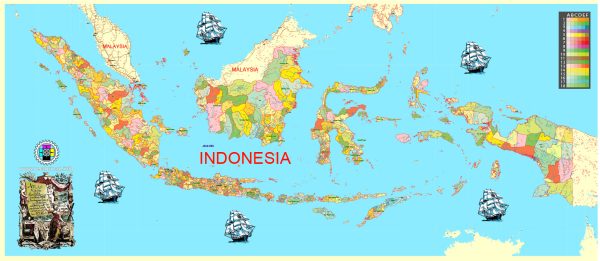The history of urban development in Indonesia is a complex and dynamic narrative that has evolved over centuries. The country’s urbanization process has been influenced by various factors, including its geographical and cultural diversity, colonial history, economic shifts, and political changes. Here is a brief overview of key periods in Indonesia’s urban development:
- Pre-Colonial Era:
- Before the arrival of Europeans, Indonesia was home to various kingdoms and empires, such as Srivijaya and Majapahit, which had sophisticated urban centers. These centers served as political, economic, and cultural hubs.
- Colonial Period (Dutch East Indies):
- The Dutch East India Company (VOC) established its presence in Indonesia in the 17th century. The Dutch colonial administration developed urban areas primarily for economic exploitation, with cities like Batavia (now Jakarta) serving as important trading posts.
- Japanese Occupation (1942-1945):
- During World War II, Indonesia was occupied by Japan. The Japanese administration made some infrastructural changes, but their rule was relatively short-lived.
- Post-Independence (1945 onward):
- After gaining independence in 1945, Indonesia experienced rapid urbanization. The government focused on nation-building and modernization, leading to the expansion and development of urban areas. Jakarta became the political and economic center.
- Guided Economy Era (1966-1998):
- Under President Suharto’s New Order regime, Indonesia experienced significant economic growth and urbanization. The government implemented development policies that attracted foreign investment, leading to the growth of industrial zones and urban centers.
- Asian Financial Crisis (1997-1998):
- The economic downturn in the late 1990s affected Indonesia, leading to social and political upheaval. Urban areas faced challenges such as unemployment and social unrest.
- Reformasi Period (1998 onward):
- The fall of Suharto marked a new era for Indonesia. Urban development policies shifted to address issues of decentralization, poverty, and social inequality. Cities across the archipelago experienced varying rates of development.
- Contemporary Period:
- In recent years, Indonesia has faced urbanization challenges, including infrastructure deficits, traffic congestion, and environmental issues. The government has launched initiatives to promote sustainable urban development, improve infrastructure, and address social disparities.
- Smart Cities and Sustainable Development:
- In response to the challenges of urbanization, there has been a growing emphasis on smart city initiatives and sustainable urban development. This includes efforts to incorporate technology for efficient city management and address environmental concerns.
Indonesia’s urban development story reflects its journey from ancient empires to a modern, diverse nation facing the complexities of 21st-century urbanization. The dynamics of this development continue to shape the social, economic, and cultural landscape of the country.


 Author: Kirill Shrayber, Ph.D.
Author: Kirill Shrayber, Ph.D.